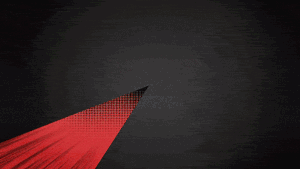92 Energy is making strides in its uranium hunt

Pic: Schroptschop / E+ via Getty Images
With uranium’s fortunes on the rise, ASX newcomer 92 Energy (ASX:92E) is dashing ahead to unlock the potential of its tenements in Canada’s Athabasca Basin, just 11km from Cigar Lake, one of the world’s largest and highest-grade uranium deposits.
And the company is starting to see some results from that early groundwork. Its recently completed versatile, time domain, electromagnetic (VTEM) survey over its Tower and Gemini projects has identified multiple prospective conductors that are prospective for high-grade, unconformity-type uranium.
That’s a fairly exciting development, as unconformity-type uranium deposits such as Cigar Lake and McArthur River are some of the largest and richest deposits globally.
It is also well-timed with expectations that uranium supply will not meet expected demand in 2030 while the US has concluded that relying on imports is a security risk.
Meanwhile, the Nationals have suggested that Australia’s ban on nuclear energy will need to be lifted in order to deliver significant carbon emissions.
92 Energy clearly has some good grounds to find new sources of uranium mineralisation and the VTEM survey has provided some indication of where to look.
Uranium exploration
Over at the Tower project, the survey has identified two strong linear bedrock conductors that are interpreted to reflect graphitic rocks and a third linear conductor which may reflect a zone of hydrothermal clay alteration – a potential indicator of uranium mineralisation – in the Athabasca Formation.
Additionally, the VTEM work over the northern portion of Gemini identified two significant linear bedrock conductors, following up on the discovery of highly prospective and multiple linear EM conductors in the south.
These are all have significant potential with the company noting that it would start drill targeting once it receives the final processed data.
However, surveys can only take you so far and actually confirming that mineralisation is present requires sinking drill holes into the ground, a process that the company has already kicked off late last month.
Drilling will test up to 12 high-priority targets, which are VTEM conductors coincident with bog and lake sediment uranium anomalies, to find open-pittable, high-grade, basement-hosted unconformity-type uranium.
Such targets are similar to those that led to the discovery of the world-class Key Lake uranium mines about 60km south of Gemini, which makes a successful discovery very intriguing indeed.
Further drilling is also likely to test the VTEM conductors at Tower and north Gemini.
Related Topics

UNLOCK INSIGHTS
Discover the untold stories of emerging ASX stocks.
Daily news and expert analysis, it's free to subscribe.
By proceeding, you confirm you understand that we handle personal information in accordance with our Privacy Policy.








